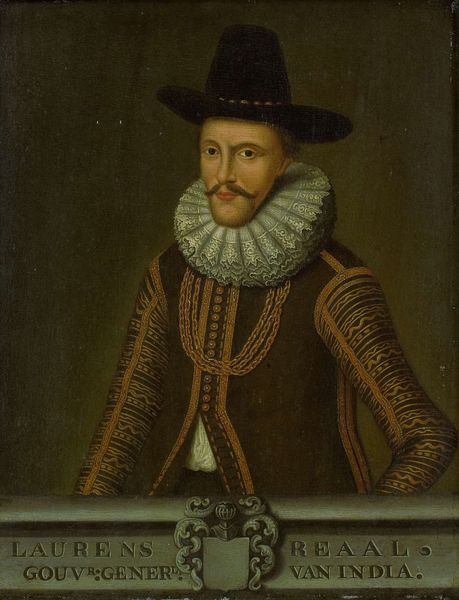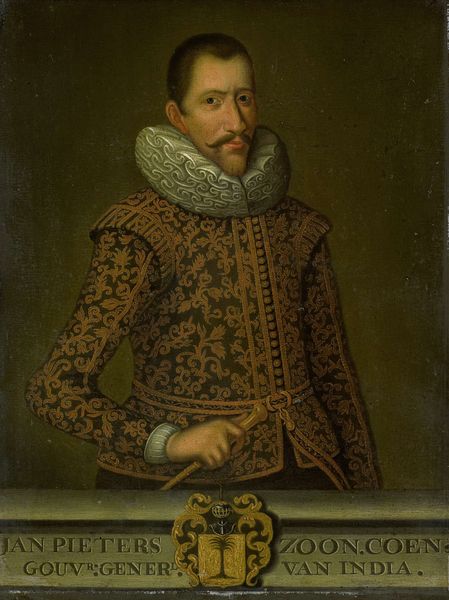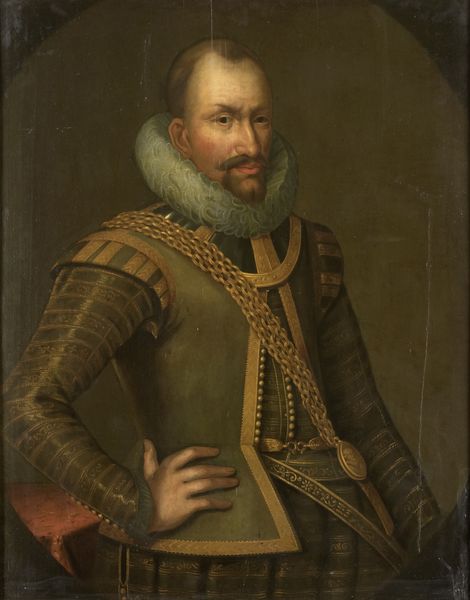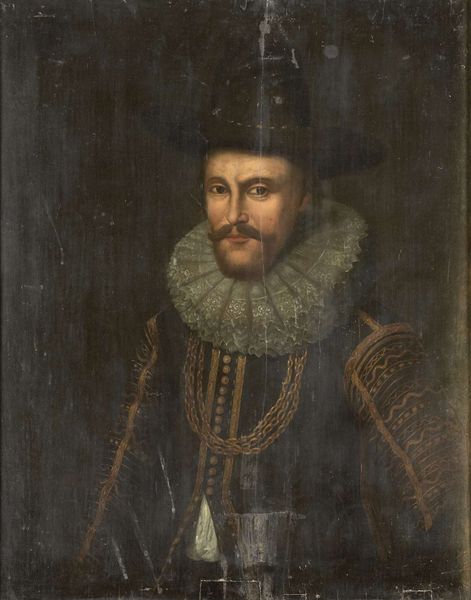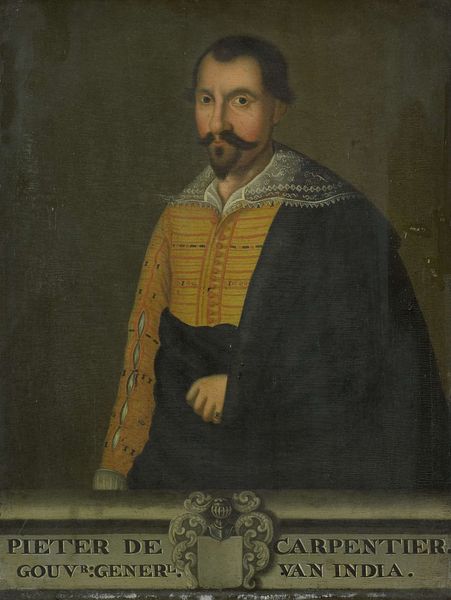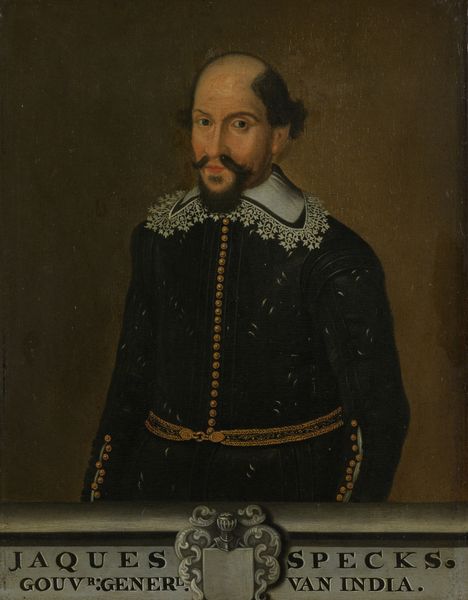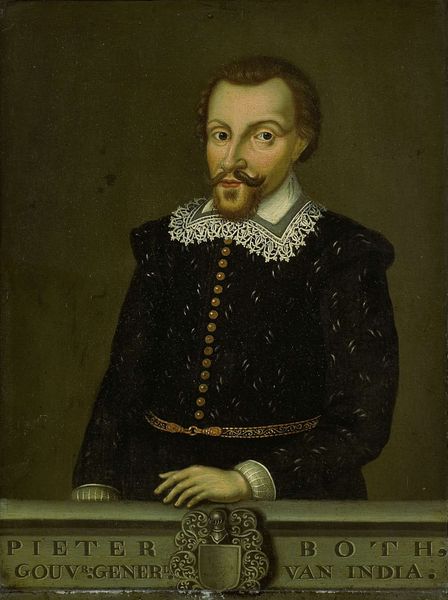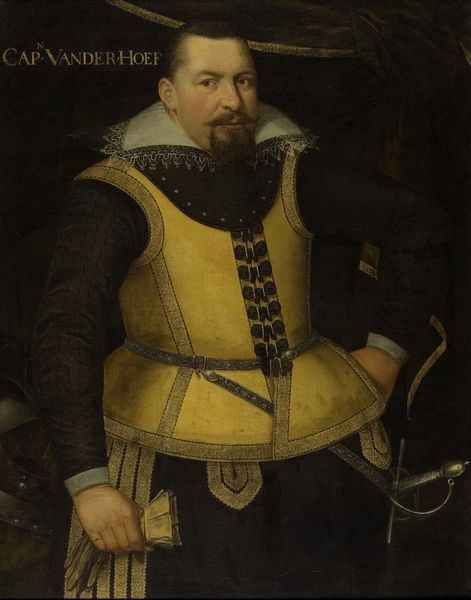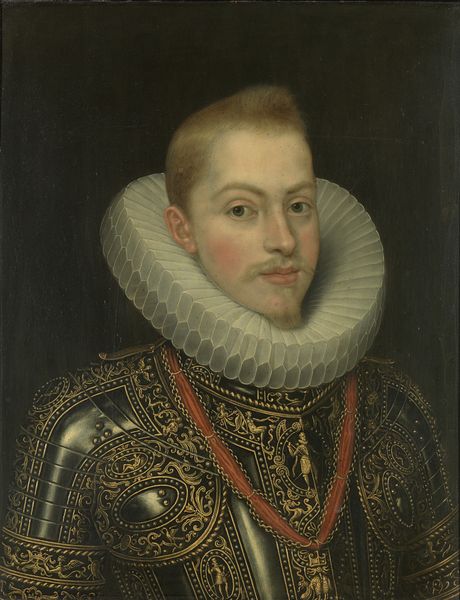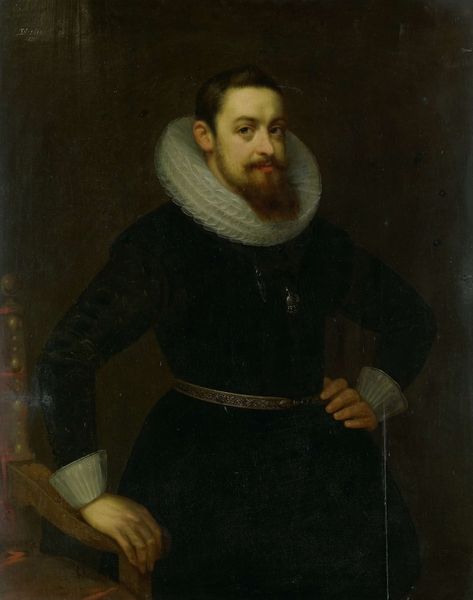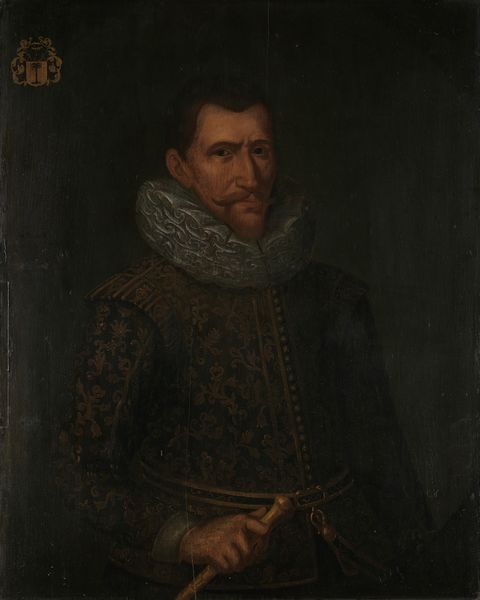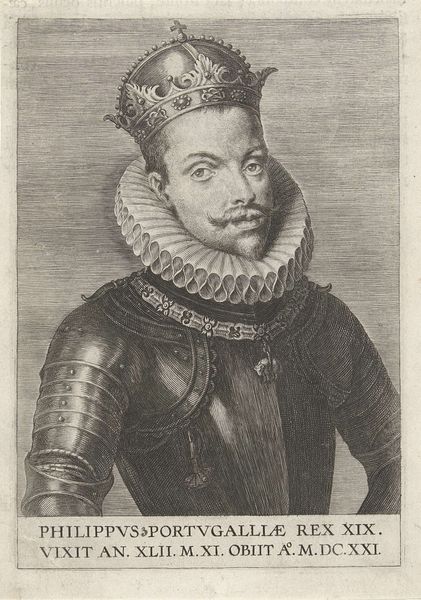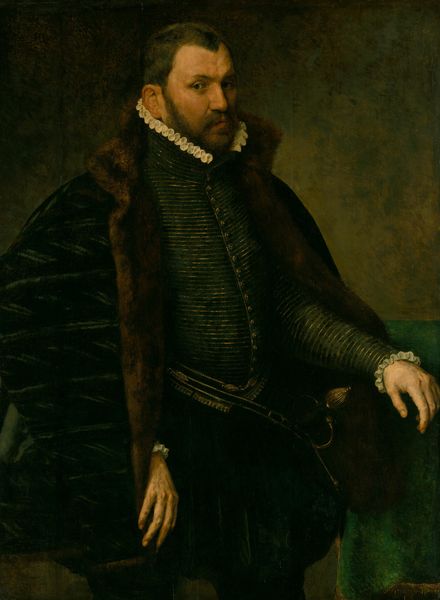
Dimensions: height 33 cm, width 25 cm, depth 3.7 cm
Copyright: Rijks Museum: Open Domain
Curator: Let’s examine this painting. It’s identified as “Portrait of Gerard Reynst, Governor-General of the Dutch East Indies,” likely produced between 1750 and 1800. What's striking to you initially? Editor: The restrained color palette definitely sets a somber tone, doesn’t it? His gaze is direct, but the overall impression feels rather melancholic and also imposing. Curator: Precisely. Context is crucial. Gerard Reynst's governorship coincided with a period of considerable upheaval in the Dutch East Indies, characterized by colonial expansion and, undeniably, exploitation. Portraits like this served not merely as likenesses, but as assertions of power and authority within the framework of Dutch imperial ambitions. Editor: So, a carefully constructed image reinforcing colonial dominance? His attire is incredibly elaborate, yet rendered in such muted colors. It speaks to wealth, sure, but in a hushed, almost apologetic manner. Where does the Dutch Golden Age fit into this reading of imagery? Curator: While the portrait might carry stylistic echoes, especially in the rendering of textures and details, the narrative it supports shifts significantly. By the late 18th century, the Dutch East India Company faced increasing scrutiny for its practices. This portrait exists, then, within a climate where portraying colonial figures required a more calculated and careful approach. What stories did people tell about colonialism and how was this narrative used politically in the 18th century? Editor: You're suggesting that this portrait actively participates in that complex socio-political game? If we acknowledge that the power of the Dutch empire was based on extraction and forced subjugation of people of color, this portrayal normalizes those inequalities in such a polite portrait. Curator: Exactly! It masks them behind respectability. Considering the date it seems that the artist wanted to create a sort of heroic history painting where this person had control of all that he conquered in Asia. We should look into how such works reinforce dominant power structures through visual cues. Editor: Right. Thinking of its contemporary resonance, it’s crucial we unpack how visual strategies of that era legitimized – and continue to subtly inform – legacies of colonial violence. It shows how important portraits are in maintaining power in culture. Curator: Indeed. There's more beneath the surface than just a historical face; this is a visual representation that we can learn much about historical injustice.
Comments
No comments
Be the first to comment and join the conversation on the ultimate creative platform.
